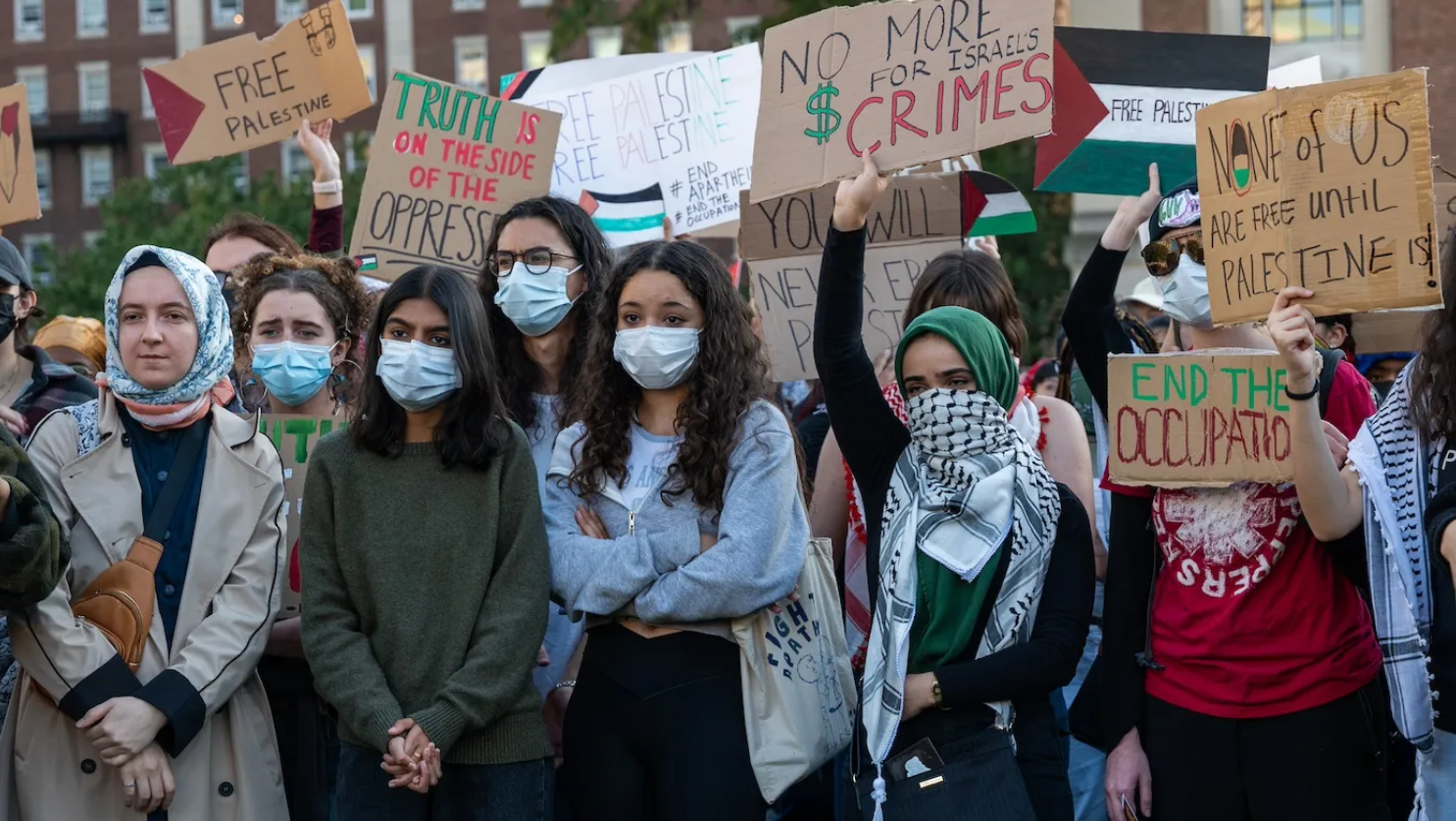US campus revolt shows the bankruptcy of the ‘adults in charge’

Israel’s war on Gaza has passed the 200-day mark. It is the longest continual military assault on Palestine since the war that established Israel in 1948 and is now the bloodiest by a long stretch. The Israeli military has killed at least 34,000 Palestinians, and around 7,000 are thought to be missing, likely buried under the rubble of the destroyed enclave.
All the terrible scenes ubiquitous to war are being beamed out of Gaza in real time. Over the last fortnight, mass graves were found at two hospitals previously raided by Israeli soldiers: at least 392 bodies at Nasser hospital in Khan Younis and hundreds more at Al Shifa hospital in northern Gaza. The bodies reportedly show signs of torture and executions. Palestinian Civil Defence officials say that ten of the bodies were found with their hands bound; twenty are thought to have been buried alive. Identifying many of the victims is proving difficult due to the mutilation of the bodies.
Northern Gaza, which was cut off from the rest of the strip for months, is heading towards famine. The charity Save the Children says that 27 children had died of malnutrition and dehydration by the beginning of April.
Meanwhile, the daily shelling and bombing continue.
In recent weeks, tensions have only increased. When Israel bombed the Iranian consulate in Syria and Iran retaliated by launching more than 300 drones, cruise missiles and ballistic missiles toward Israeli territory, the region seemed to be on the brink of a much larger war.
In the end, neither side thought it opportune to escalate further. But while Israel continues to lob missiles into neighbouring countries, the threat of a wider conflagration remains.
According to some speculations, US President Joe Biden offered not to stand in the way of an invasion of Rafah to convince Israeli Prime Minister Benjamin Netanyahu to back down from attacking Iran. The city in southern Gaza has taken in at least 1 million displaced Palestinians since October, and Netanyahu has insisted for weeks that it will be his next target. Israel last week stepped up air strikes on the area, and government spokesman David Mencer said that the military is “moving ahead” with the planned invasion.
There has been growing international pressure on Netanyahu to reduce the number of civilian casualties. The genocide is unpopular in the West, particularly among electoral constituencies that Biden, Australian PM Anthony Albanese and other centrist leaders rely on. But the pressure has come only in the form of statements.
Biden has announced US$17 billion in additional aid for Israel. In March, the Washington Post reported that the United States had quietly approved more than 100 arms sales since October. The genocide is being armed and funded by the leaders of the so-called free and democratic world.
But another group of people in the West is taking a principled stand against genocide—US university students. Over the last week and a half, thousands across the country set up protest camps in solidarity with Palestine.
Young people are much maligned by politicians and the media, particularly when they express strong progressive or left-wing political opinions. They are told just to focus on their studies, defer to their elders and wait until they’re old enough to know better.
The courage and decency that the students have shown put to shame the genocidal impulses of the adults in charge.
Columbia University in New York was the first to erupt, after hundreds of students established a camp on university lawns and demanded that the administration cut ties with Israeli apartheid and weapons companies. The response was sharp and swift—100 students were arrested and suspended after just 24 hours.
But the images of cops streaming into the campus to smash the camp and drag away protesters quickly inspired thousands more students across the country to join the movement. At the time of writing, protest camps have been established on 40 campuses.
There is a flavour of 1968 to this rebellion. That year, the anti-Vietnam War movement exploded, riots rocked the country after the assassination of Martin Luther King Jr and a mass demonstration outside the Democratic National Convention in Chicago was brutally attacked by police, the National Guard and other law enforcement agencies. Two years later, the Ohio National Guard killed four student protesters at Kent State University.
The current situation has not reached that level of violence. But students are facing a similar enemy over a similar issue. The entire liberal establishment has fallen in behind Israel, from the Democratic president to the heads of the Ivy League colleges. Columbia University President Minouche Shafik threatened to call in the National Guard. But as in 1968, the violence and intimidation have only angered wider layers of students and faculty.
One good thing that came out of the Vietnam War was the mass radicalisation formed in response to it. A generation of young people turned their backs on an establishment that had exposed the depths of its own brutality. Many participants in that movement drew more far-reaching conclusions about the nature of capitalist society and devoted themselves to fighting for a better world.
Let’s hope this generation follows in their footsteps.